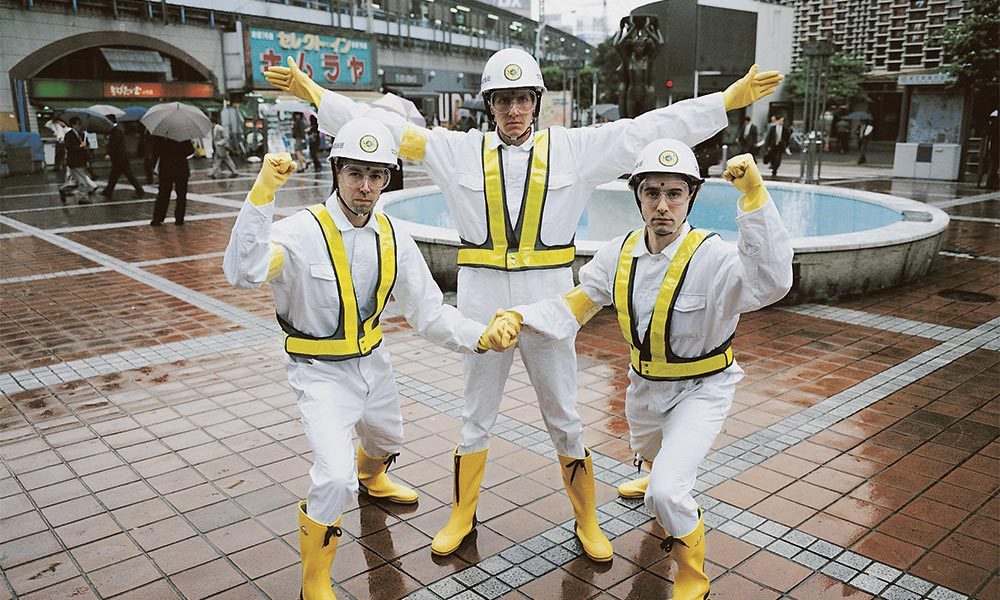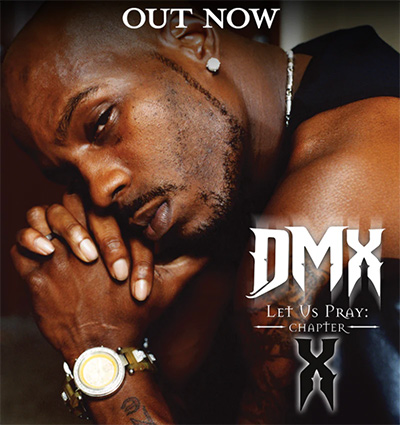15 Things We Learned From Reading ‘Beastie Boys Book’
‘Beastie Boys Book’ is one of the most open, honest and thoughtful memoirs in recent memory. Here are 15 Beastie Boys facts we learned from reading it.

Released on October 29, 2018, and clocking in at well over 500 pages, Beastie Boys Book is an outpouring of love – for hip-hop, for New York City, and for the late MC and all-round legend that was Adam “MCA” Yauch. Hilarious and heartfelt in equal measure, it’s full of more Beastie Boys facts than you’ll ever remember.
Here are 15 things that stuck in our heads after reading Beastie Boys Book.
“BEASTIE” stands for “Boys Entering Anarchistic States Toward Internal Excellence”
“Don’t ask; no idea” says Mike D, admitting that, “While the acronym alone made no sense, it made even less sense when combined with ‘Boys’, since the acronym already contained that word; now the name was ridiculous and redundant. (And also incorrect, since we had a girl drummer.)
That was Kate Schellenbach, whose departure from the group is frankly addressed throughout the book, not least in Kate’s own chapter: “Goodbye To You And Your Inflatable Penis.”
Beastie Boys started out as hardcore punks
According to Beastie Boys Book, Michael Diamond and Adam Yauch met at a Bad Brains concert in late 1980. Mike D recalls his first impressions of the late MC: “The only other kid our age was wearing a black trench coat, a couple of small homemade band buttons, and black combat boots.” After becoming friends, “Yauch and I would sit around and listen to records endlessly and laugh about s__t… He just had a greater determination and decisiveness than the rest of us… After a while, something began to dawn on us as our lives became increasingly organized around bands and shows. We should try doing this ourselves.”
Ad-Rock bought his Roland TR-808 on a whim
After British Airways used their song “Cooky Puss” in an ad, Adam Horovitz took his share of the proceeds and set out to buy a Rickenbacker – “The same one Paul Weller from The Jam played.” Instead, as he recounts in Beastie Boys Book, a drum machine caught his eye.
“I had no idea we would actually ever really make rap music, but for some reason, I said f__k it… Maybe it was the forces of nature, but this s__t just looked really cool. No one I knew had a drum machine, and I wanted to have one.”
That very same Roland TR-808 would end up making the beats for “Brass Monkey” and Run-DMC’s “Peter Piper,” “and a bunch more songs that you might know and enjoy.”
Beastie Boys were legit friends with Run-DMC
Beastie Boys Book is littered with photos of Golden Age NYC hip-hop, not least some striking shots of the trio hanging out with Run-DMC – the “Run” of whom happened to be Joseph Simmons, brother of Russell, who signed Beasties to Def Jam for Licensed To Ill. That album’s “Slow And Low” was a cover of a song Run-DMC demoed for King Of Rock, while the group penned “Paul Revere’ together.
“The three of us were just sitting there on a stoop, and there’s Run f__kin’ DMC. Wearing their Run-DMC outfits. Hats and all,” Ad-Rock recalls of the “Paul Revere’ session. “They were standing right there. Seemingly almost as excited as we were. And they were giving us an intro to a song. Me, Adam, and Mike are trying to contain our exhilaration. When LeBron passes you the ball, you don’t just hold it and yell, ‘Oh my God oh my God, LeBron James just passed me the ball!’ No. You crossover the sucker who’s trying to guard you, and you drive the lane furiously.”
Both groups would travel together on the Raising Hell and Together Forever tours. Each Beastie was even awarded their own golden Adidas shell-toe keyring, in honor of Run-DMC’s iconic footwear, as a memento.
Their first major tour was in support of Madonna
Both came from similar downtown NYC scenes, but during her 1985 tour, Madonna released the Like A Virgin album and became a bona fide megastar overnight. “She for sure did not have to keep us on that tour, but she did. And it was huge for us,” Ad-Rock admits. “We learned so much from being out there. What a tour was like. What a real show was like. It was eye-opening and inspiring to us to be around a performer who was so awesome and totally professional and who was out to handle her business and just have fun.”
They “accidentally” released the first gangsta rap record…
So says Brooklyn-born novelist Jonathan Lethem of Licensed To Ill: “If gangsta rap is identifiable by first-person crime narrative, misogyny, drug and alcohol glorification, and over-the-top violence, then they had done it for sure.”
… But now they regret the “caricatures” they became
Beastie Boys Book is nothing if not brutally honest. So when Mike D looks back at Licensed To Ill in a chapter titled “We Liked It. We Hated It.,” you know he’s bringing hindsight to bear on his views. He writes: “… we went from being, like This is the most exciting thing ever, I can’t believe we’re actually rock stars to thinking, God, people really expect us to be these idiot caricatures of ourselves night after night. This kind of sucks.”
“You gotta really think before you say or do some dumb shit,” Ad-Rock reflects, noting that Beasties stopped played “(You Gotta) Fight For Your Right (To Party)’ after 1987. “Not always, but usually… take a moment. Think of yourself in the future looking back. Think about the people you care about most. Will they be embarrassed for you, and of you? Yes, they will think you’re an a__hole.”
Adam “MCA” Yauch was some sort of magician
There is no shortage of stories that hinge around a genius idea courtesy of Adam Yauch, from fashioning crazy tape loops in order to create iconic songs (“Rhymin’ And Stealin’) to making an entire generation aware of the plight of Tibetan monks (more on which later…). “Oh yeah… I heard how you could pull a rabbit out of a hat and so… here’s an elephant,” is how Ad-Rock describes it.
The “Paul Revere’ beat was one such moment, “very typical” of MCA, according to Ad-Rock. Suggesting they record the drum machine backwards resulted in another breakthrough for the group: “Up until that moment, in 1986, there had never been a beat that sounded as funky fresh, dope, hype or def… The beat was so nice that we must’ve just gotten lost in it, ’cause we didn’t actually record any vocals that night.”
The “Is your name Michael Diamond?” guy was just a random messenger
Paul’s Boutique was partly recorded “at a fancy Hollywood studio.” As Mike D recalls in Beastie Boys Book: “The dude that says, ‘Is your name Michael Diamond?’ was just a very tall messenger who happened to be delivering a cash advance to us at the studio. We would get so excited every time this would happen, even though it was our money. We would nickname the messengers Louie.”
Beastie Boys actually ran a Paul’s Boutique store answering machine
They put the Paul’s Boutique radio ad on their album of the same name, but when the store shut down, MCA bought the phone number – without initially telling anyone. “He had it routed to an answering machine in the basement of his parents’ house in Brooklyn,” Ad-Rock recalls, revealing that that’s where they got the “Yo, Paul, this is Allen, and you can kiss my ass” message used Check Your Head.
“It turns out, when you put a phone number on a record that half a million people own… there’s gonna be more than a few who decide to call it. After a while, s__t got pretty odd.” The answering machine went into retirement, to be brought out “every once in a while… for a couple of weeks. And maybe, just maybe, it still does.”
They also ran their own clothing line, magazine, and record label
Their G-Son complex in Los Angeles wasn’t just where they hung out, recorded their music, and played basketball; Beastie Boys’ entrepreneurial streak took them into other areas. The X-Large clothing store was originally launched to sell the kind of gear Beasties were into, but, “Pretty quickly, we got bored with the small amount of other designers’ clothes we actually liked, and just started making more and more clothes ourselves,” says Mike D in Beastie Boys Book.
Similarly reflective of their own tastes, the Grand Royal record label provided a home for cult releases by the likes of Luscious Jackson and Atari Teenage Riot, plus the super-cool At Home With The Groovebox compilation, while the sister magazine helped spread the word and provided a window into Beasties’ life and loves, with interviews with the likes of Q-Tip and Lee “Scratch” Perry for good measure. “Eventually, though, we realized it was spreading us too thin,” Mike D recalls. “Fundamentally, all we cared about was being in a band.”
Beasties were internet pioneers
With an actual print publication taking up too much time, Beastie Boys still wanted to connect with their fans. Step up Ian Rogers, a fanboy who launched an online Beastie Boys FAQ in 1993. Two years later, Beasties hired him to man their online presence. “They were visionary and quick to explore something new, always making it theirs instead of using what other people were doing as a template,” Rogers recalls. “They could have worked with professionals, but instead they preferred to support a kid from Indiana they thought had some potential.”
Hello Nasty is their “best record”, according to Ad-Rock
Among his reasons:
“It has the song ‘Intergalactic’, and that song is the f__kin’ jam, right?!”
“It’s our best record/cover artwork… Hello Nasty was where we were headed. Interplanetary and outer space.”
“It was the end of an era. It was the beginning of a new chapter, sure, but after this, things were different. After this we were grown-ups… Innocence passed at such a mass and rapid rate that after this there was only looking back… at this.”
Adam Yauch made a whole generation aware of the plight of Tibetan monks
After meeting exiled Tibetans while trekking in the Himalayas, in the early 90s, Yauch threw himself into their cause, attending talks by the Dalai Lama and writing songs that “incorporated his new life findings, his new understanding of the interconnectedness of things.” In 1996, he organized the Tibetan Freedom Concert, a two-day benefit in San Francisco’s Golden Gate Park, following it up with even bigger events in ’97, ’98, and ’99.
“It was the biggest charity concert since Live Aid,” Ad-Rock says of the first event, with no small sense of awe. “What he did was historic… Hundreds of thousands of people had ‘Free Tibet’ on their tongues and heard the call for nonviolence because of that guy in Beastie Boys.”
He is also sorely missed
Though never directly speaking in Beastie Boys Book, MCA’s spirit and ideas course through it. The opening and closing chapters are given over to his memory, and almost every story in between has some element of Yauch’s brilliance. “One of the reasons me+Mike were lucky is that we didn’t have to figure out a lot of s__t because Yauch already knew it,” Ad-Rock says at the start of the book.
The closing chapter finds Mike D looking back at their intrepid bandmate, reflecting: “Whenever I have the opportunity to do a random, kind of crazy thing, something I feel I have no business doing, I ask myself, ‘What would Yauch do?’”













Matt
February 20, 2019 at 6:51 pm
The “Is your name Michael Diamond?” guy sounds like Arnold.